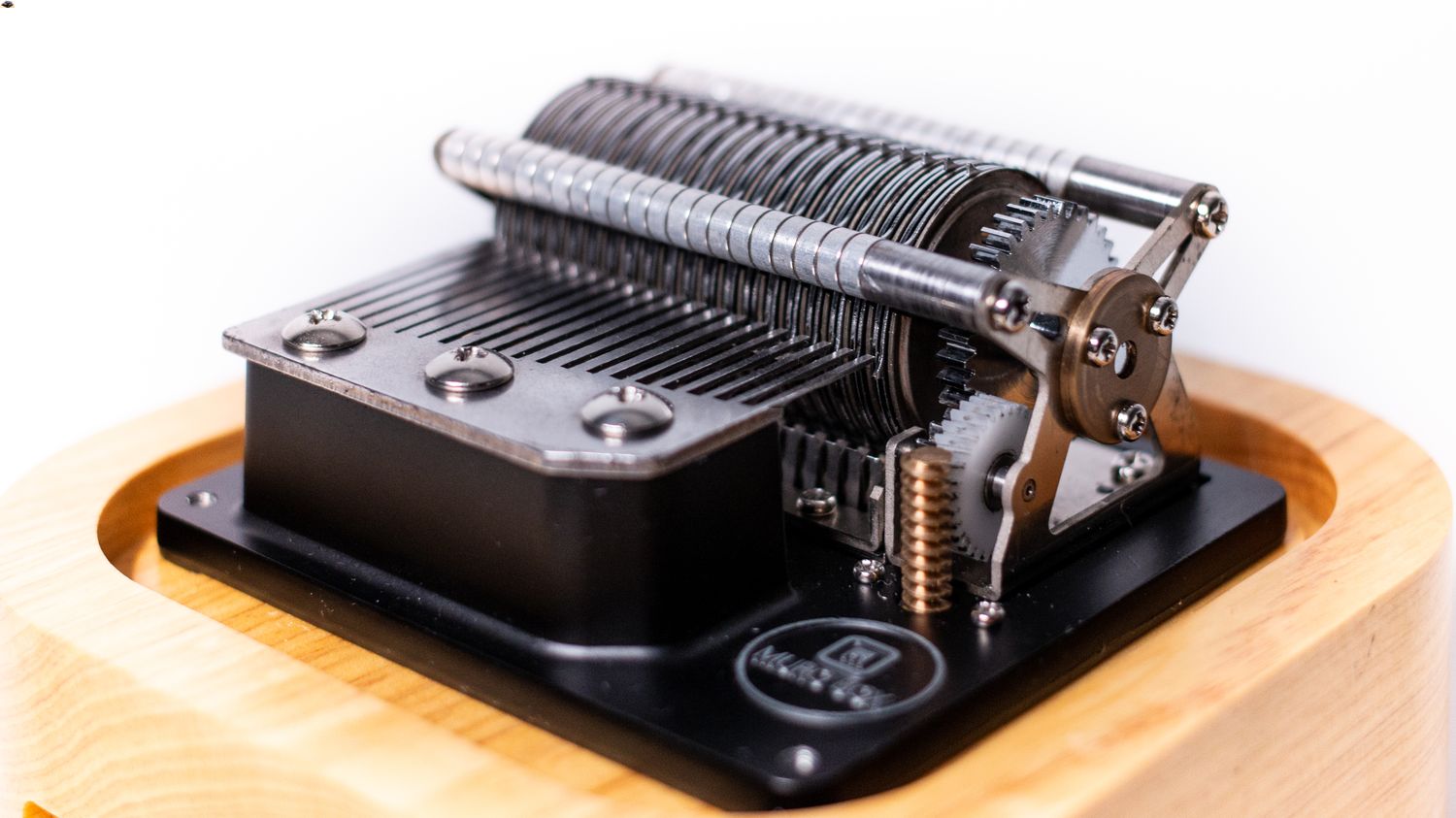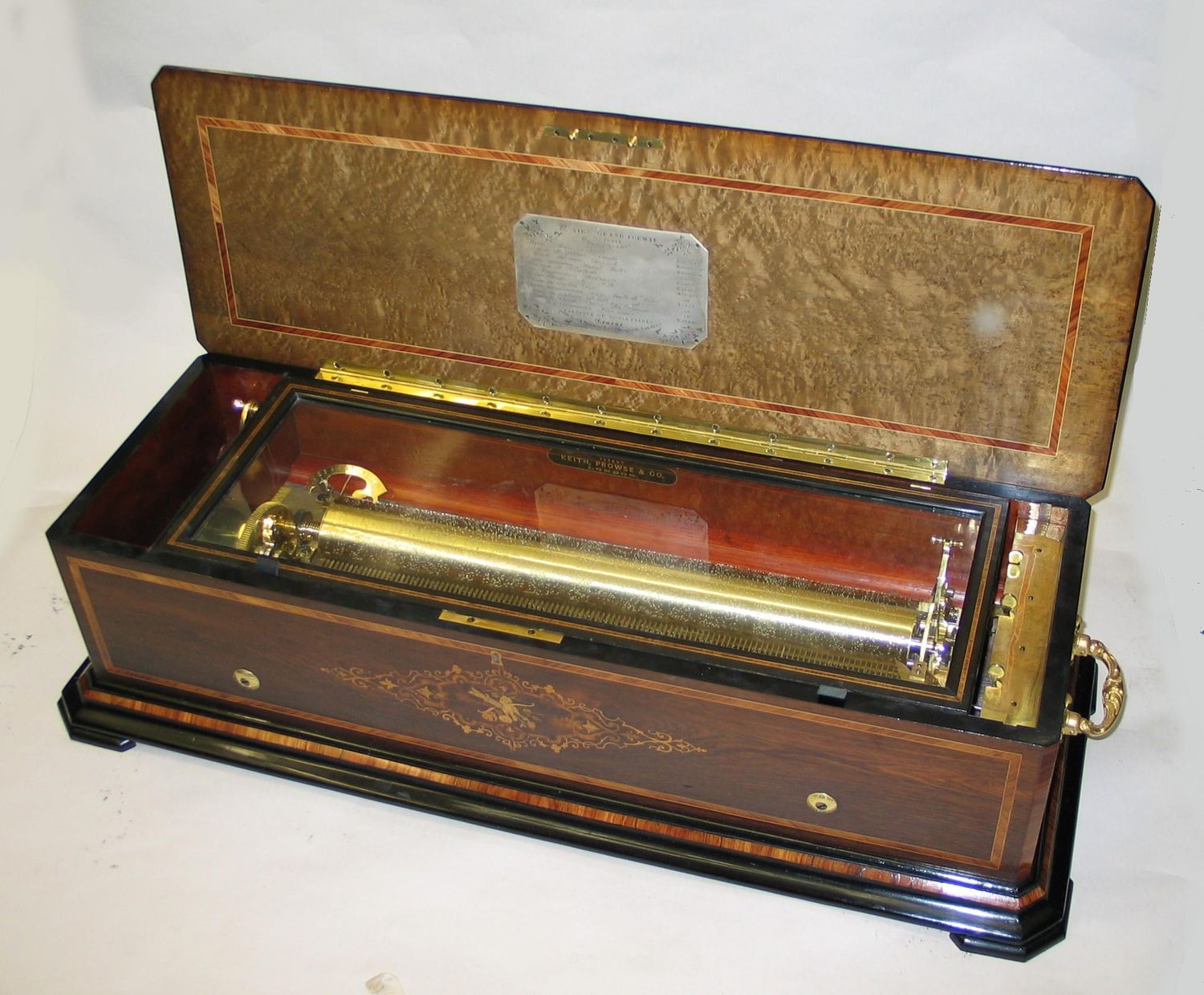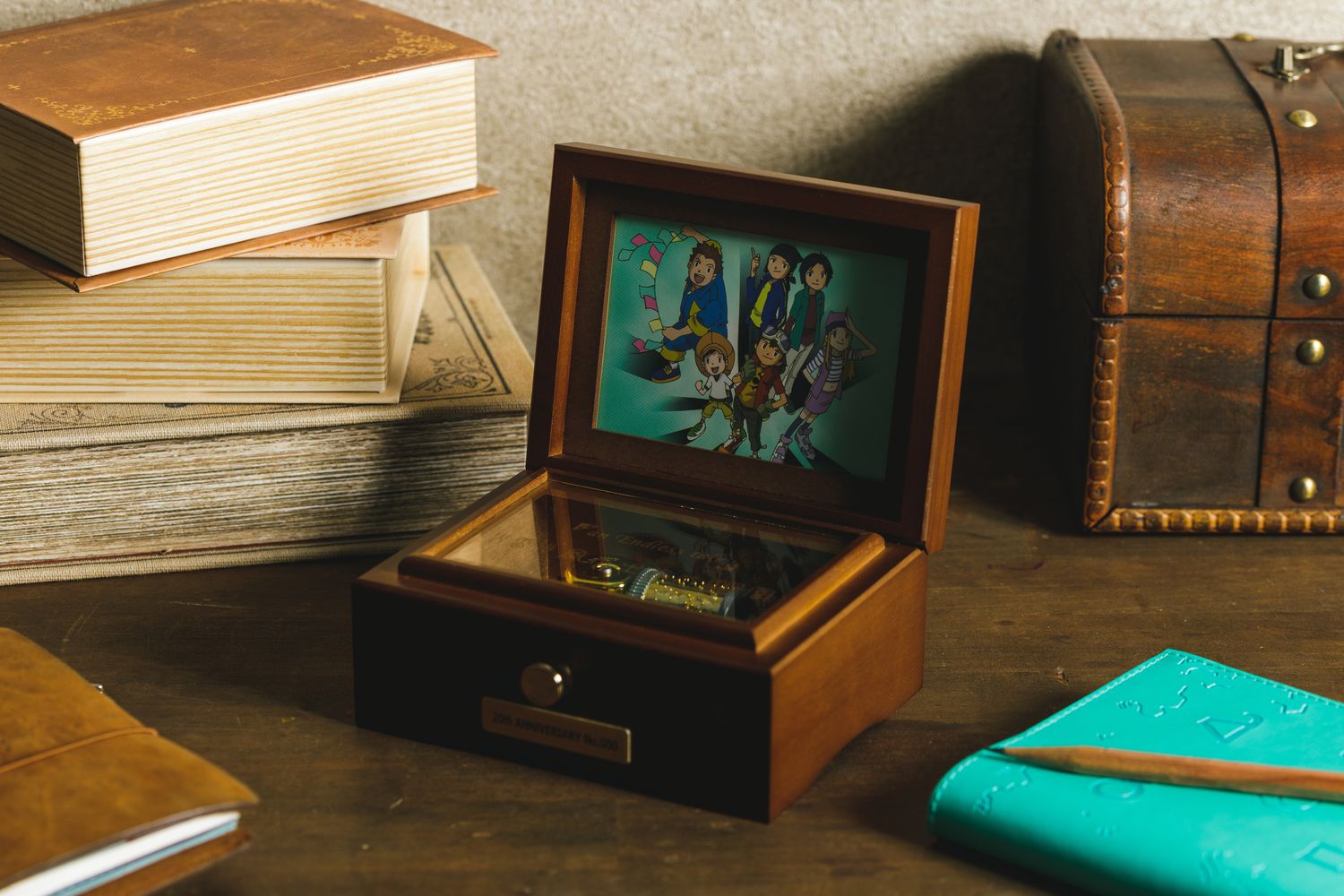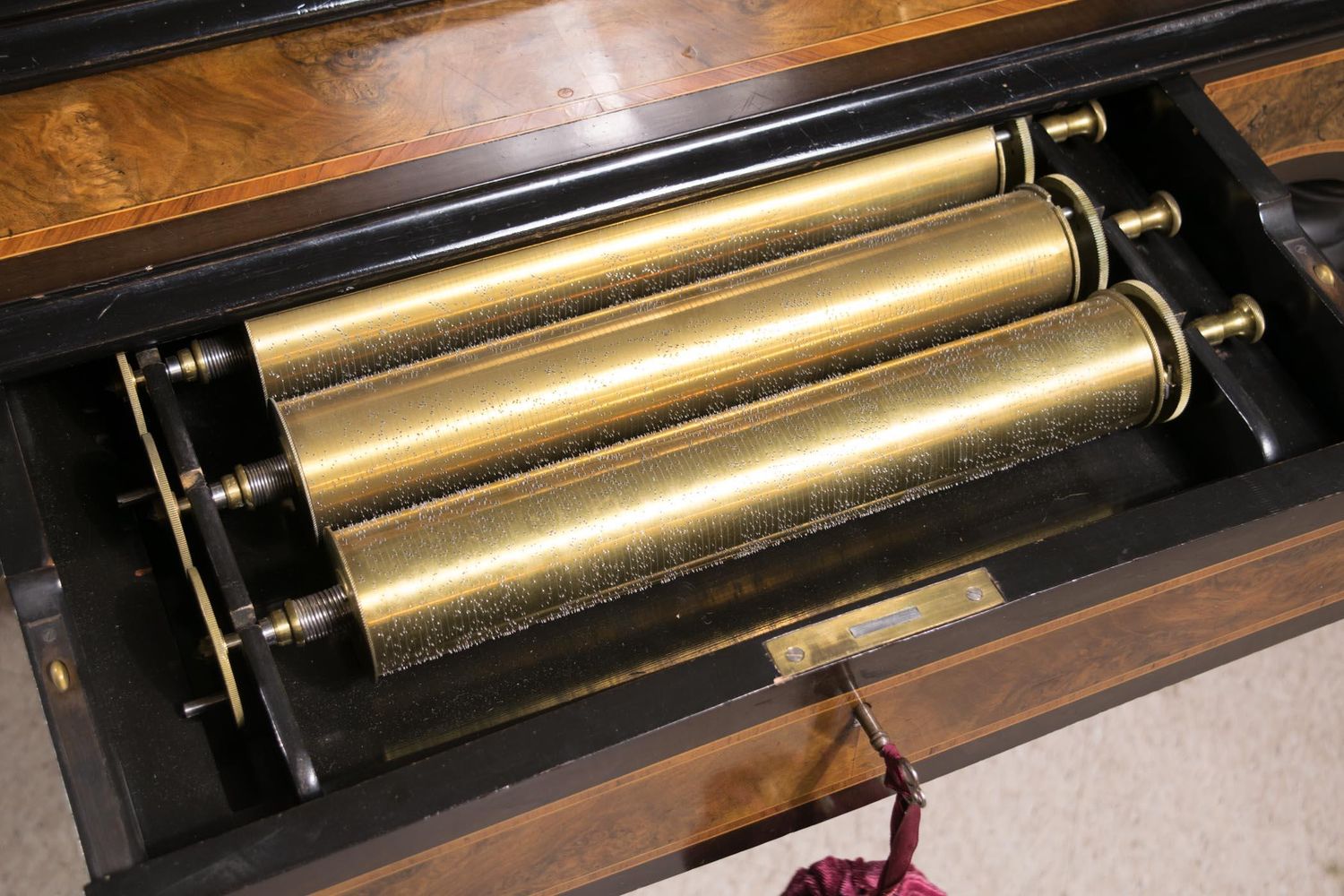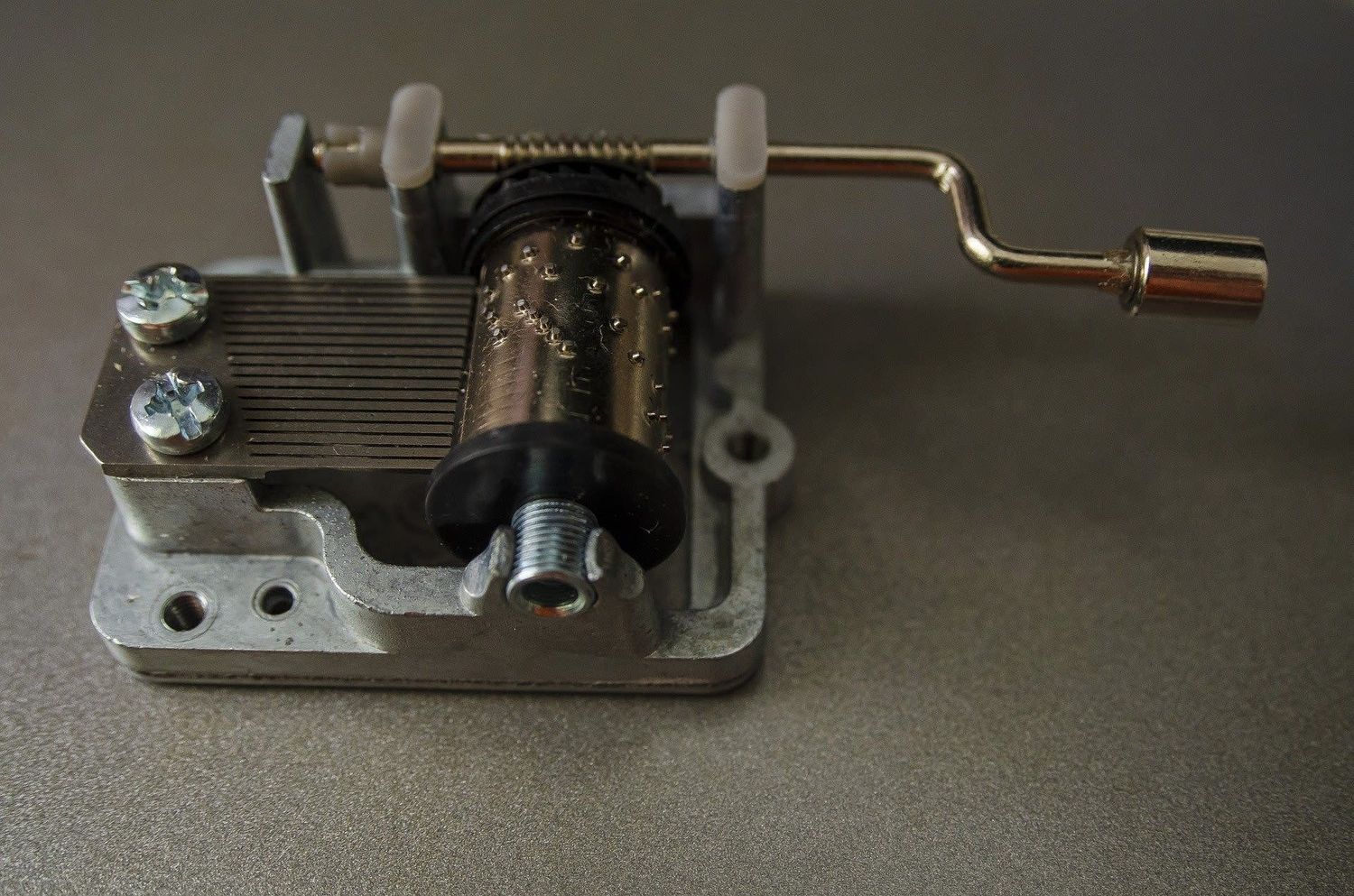Home>Devices & Equipment>Music Box>How A Music Box Works
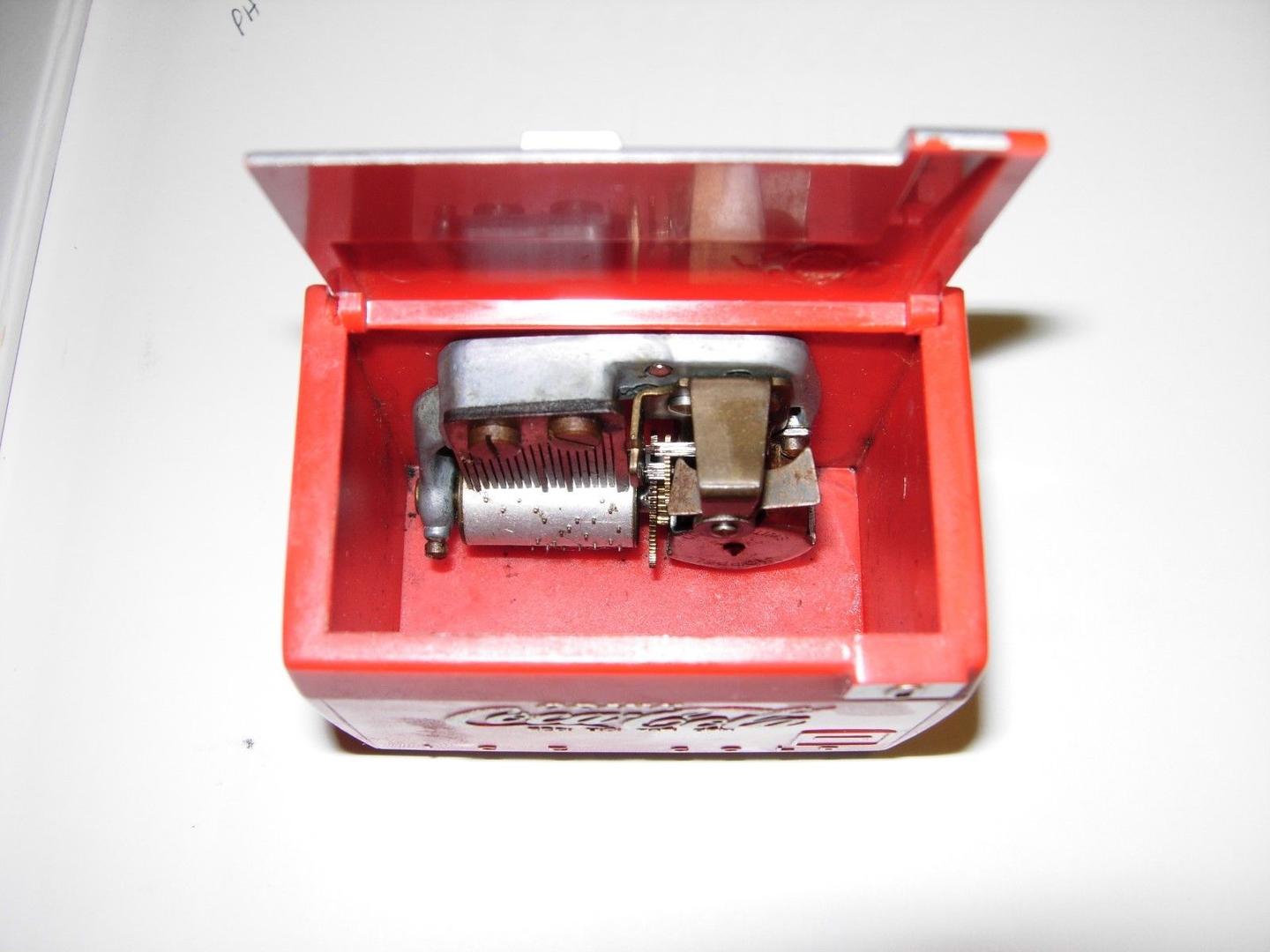

Music Box
How A Music Box Works
Modified: January 22, 2024
Discover the inner workings of a music box and how it produces enchanting melodies. Experience the magic and nostalgia of a Music Box with our detailed explanation and beautiful illustrations.
(Many of the links in this article redirect to a specific reviewed product. Your purchase of these products through affiliate links helps to generate commission for AudioLover.com, at no extra cost. Learn more)
Table of Contents
Introduction
Music boxes have a timeless charm that can transport us to a different era with just a few notes. These delicate and intricate musical instruments have been enchanting people for centuries with their melodic tunes and exquisite craftsmanship. From simple melodies to complex compositions, music boxes have the power to evoke emotions and create a sense of nostalgia.
In this article, we will delve into the fascinating world of music boxes, exploring their history, components, mechanics, and sound production. Whether you are a music aficionado, a collector, or simply curious about the inner workings of these captivating devices, join us on this journey as we uncover the secrets of music boxes.
As we explore the history and mechanics of music boxes, you will gain a deeper appreciation for these remarkable creations, understanding how they produce such beautiful sounds and melodies. We will also touch on the different types of music boxes and their modern-day applications, showcasing how they continue to captivate audiences and bring joy to people’s lives.
So, sit back, relax, and let the enchanting world of music boxes unveil itself to you. Discover the magic behind these intricate musical instruments and embark on a journey through time as we explore the wonders of melodies preserved in a small box.
History of Music Boxes
The history of music boxes dates back to the late 18th century, with their origins traced to Switzerland. These early music boxes were known as “musical snuff boxes” and were primarily used as status symbols among the European elite. They were small, portable boxes that played short tunes when a lever was activated.
However, it was not until the early 19th century that music boxes became more widely accessible and popular. During this time, advances in technology and a growing demand for musical entertainment led to the development of larger and more elaborate music boxes.
Switzerland continued to be at the forefront of music box production, with skilled craftsmen perfecting the art of creating intricate mechanisms that could produce complex melodies. These music boxes were often adorned with delicate engravings, inlaid woodwork, and elaborate details, showcasing the extraordinary craftsmanship involved in their creation.
In the 19th century, music boxes became highly sought-after luxury items across Europe and the United States. They were frequently featured in salons, drawing rooms, and parlors, providing entertainment and delighting guests with their melodious tunes. The popularity of music boxes reached its peak during the Victorian era, where they became a symbol of refinement and sophistication in society.
Over time, music box designs evolved to incorporate different types of musical mechanisms. In addition to the traditional cylinder mechanism, disc mechanisms became popular, allowing for a wider range of melodies to be played. These disc music boxes often had interchangeable discs, allowing the owner to customize the selection of tunes.
As the 20th century approached, the advent of new technologies, such as the phonograph and later the radio, diminished the demand for music boxes. However, their allure remained, and today, music boxes continue to be cherished as collectibles and cherished heirlooms.
The rich history of music boxes showcases their enduring appeal and the artistry behind their creation. They have come a long way from their humble origins as snuff boxes, evolving into intricate musical instruments that captivate and delight people of all ages.
Components of a Music Box
While the outer appearance of a music box may vary greatly in terms of size, shape, and design, the internal components remain fairly consistent across different models. Understanding the key components of a music box is essential to appreciate the complexity and craftsmanship involved in their construction.
1. Case: The case serves as the outer housing for the music box and is often made of wood, metal, or a combination of both. It can be intricately carved, adorned with decorative elements, and designed to enhance the overall aesthetic appeal of the music box.
2. Mechanism: The mechanism is the heart of the music box, responsible for producing the music. It consists of various components, including the cylinder or disc, the comb, the governor, and the winding mechanism.
3. Cylinder or Disc: The cylinder or disc is the main rotating component that contains the pins or bumps responsible for producing the musical notes. The cylinder is typically used in traditional music boxes, while disc mechanisms are more common in modern music boxes.
4. Comb: The comb is a long strip of metal with teeth of varying lengths. These teeth are carefully tuned to produce specific musical notes when plucked by the pins or bumps on the cylinder or disc. The comb is mounted inside the music box and is a crucial element in creating the melodic sound.
5. Governor: The governor regulates the speed at which the cylinder or disc rotates, ensuring a consistent and smooth melody. It typically consists of two weighted arms that expand or contract as the music box winds down, controlling the speed of the mechanism.
6. Winding Mechanism: The winding mechanism allows the music box to be wound up, storing potential energy to power the movement of the cylinder or disc. It is often in the form of a key or a crank that is turned to wind up a spring inside the mechanism.
7. Hammers: In some music boxes, hammers might be present to strike metal or glass resonators, producing a more percussive sound in addition to the melodic notes generated by the comb.
These are the fundamental components of a music box, each playing a crucial role in its operation and sound production. The harmonious combination of these components results in the enchanting melodies that music boxes are renowned for.
Mechanics of a Music Box
The mechanics of a music box involve intricate processes that work together to produce the captivating melodies that we associate with these charming instruments. Understanding the mechanics behind a music box allows for a deeper appreciation of the craftsmanship and engineering involved in their creation.
At the core of a music box’s mechanics is the cylinder or disc mechanism, which determines the selection and sequence of notes played. The cylinder mechanism features a rotating cylinder with strategically placed pins, while the disc mechanism utilizes a flat metal disc with bumps or perforations. As the cylinder or disc rotates, the pins or bumps interact with the comb, creating distinct musical notes.
The comb is a crucial component of the music box that consists of metal teeth of varying lengths. When the pins or bumps on the cylinder or disc pluck the teeth of the comb, they produce specific musical notes. The length and position of the teeth determine the pitch of each note, allowing for a range of melodies to be played.
The governor is another important part of the music box mechanism. It controls the speed at which the cylinder or disc rotates, maintaining a consistent tempo and preventing the music from playing too quickly or too slowly. The governor achieves this through weighted arms that expand or contract based on the tension of the spring, finely regulating the rotation speed.
The winding mechanism of a music box enables it to be wound up, allowing the spring inside the mechanism to store potential energy. This energy is released gradually, driving the rotation of the cylinder or disc and powering the movement of the pins or bumps that interact with the comb.
As the cylinder or disc rotates and the pins or bumps pluck the teeth of the comb, the resulting vibrations create sound waves that resonate throughout the music box’s case, amplifying the melodic notes. Some music boxes may also have hammers that strike metal or glass resonators, adding percussive elements to the overall sound produced.
Through precise engineering and meticulous craftsmanship, the various components of a music box work harmoniously to produce enchanting melodies. The mechanics involved in these instruments showcase the ingenuity of their inventors and the enduring appeal of music boxes as cherished keepsakes and works of art.
How the Cylinder or Disc Works
The cylinder or disc is a critical component of a music box mechanism, determining the selection and sequence of musical notes played. Whether using a cylinder or disc mechanism, the principle of operation remains similar, with slight variations in design and function.
In a traditional music box with a cylinder mechanism, a rotating cylinder is responsible for triggering the musical notes. The cylinder is typically made of metal and has strategically placed pins along its surface. As the cylinder rotates, these pins interact with the comb, producing different notes.
When a pin on the cylinder passes over the comb, it pushes the corresponding tooth of the comb, causing it to vibrate. Each tooth of the comb is tuned to produce a specific pitch, and the combination of vibrating teeth creates a melody. The length and position of the pins on the cylinder determine the sequence and duration of the notes played.
On the other hand, music boxes with disc mechanisms utilize metal discs with bumps or perforations. These discs are interchangeable, allowing for a wider variety of melodies to be played. When the disc rotates, the bumps or perforations come into contact with the comb, plucking its teeth and creating musical notes.
Similar to the cylinder mechanism, each bump or perforation on the disc corresponds to a specific note. As the bumps or perforations on the disc pass over the comb, they push the teeth, generating vibrations and producing the desired musical tones.
Both the cylinder and disc mechanisms offer unique advantages and characteristics. The cylinder mechanism provides a consistent sequence of notes and is often found in older, traditional music boxes. The disc mechanism, on the other hand, offers more versatility, allowing for easier customization and the inclusion of a wider range of melodies.
The cylinder or disc mechanism, combined with the intricately tuned comb, is responsible for creating the beautiful melodies that music boxes are known for. Together, these components form the heart of the music box, ensuring the precise and harmonious execution of each note. Whether it’s the rotating cylinder or the interchangeable discs, the ingenious design of the cylinder or disc mechanism is key to the enchanting melodies produced by a music box.
How the Pins or Bumps Control the Melody
The pins or bumps on the cylinder or disc of a music box play a crucial role in controlling the melody that is produced. These pins or bumps are strategically placed and interact with the comb, determining the sequence and timing of the musical notes played.
In a traditional music box with a cylinder mechanism, the pins on the rotating cylinder are the key elements that initiate the production of musical notes. Each pin represents a specific note, and as the cylinder rotates, these pins come into contact with the comb.
When a pin on the cylinder passes over the comb, it elevates the corresponding tooth of the comb. The raised tooth interacts with the rotating cylinder, resulting in a plucking action and generating a specific pitch. The length and position of the pins on the cylinder determine the sequence of notes played, creating a melody with its unique rhythm and timing.
In music boxes with disc mechanisms, the bumps or perforations on the metal disc take on the same role as the pins in a cylinder mechanism. As the disc rotates, the bumps or perforations come into contact with the comb, initiating the production of musical notes.
When a bump or perforation on the disc reaches the comb, it interacts with the teeth and causes them to vibrate. Each bump or perforation corresponds to a specific note, and the resulting vibrations of the teeth create a melodic tone. The sequence and arrangement of the bumps or perforations on the disc determine the order and timing of the notes played, shaping the melody that is produced.
Whether using pins on a cylinder or bumps on a disc, the positioning and configuration of these elements are meticulously designed to create a harmonious and pleasing melody. The careful arrangement of pins or bumps on the cylinder or disc, in conjunction with the finely tuned comb, allows music boxes to produce complex melodies that captivate and delight listeners.
Next time you listen to the mesmerizing melody of a music box, imagine the intricate mechanics at play – the pins or bumps on the cylinder or disc working in harmony with the comb, translating their placements into a beautiful symphony of sound.
Sound Production in a Music Box
The sound production in a music box is a result of the harmonious interplay of various components, including the comb, cylinder or disc, pins or bumps, and resonators. These components work together to create the enchanting and melodic sounds that music boxes are known for.
At the heart of a music box is the comb, a strip of metal with carefully tuned teeth. Each tooth of the comb is different in length and thickness, producing specific musical notes when plucked. As the cylinder or disc rotates and the pins or bumps come into contact with the comb, they engage with the teeth, causing them to vibrate.
The vibrations of the teeth create sound waves that propagate through the air inside the music box. These sound waves then resonate within the chamber of the music box, amplifying the melodic notes and giving them a rich and distinctive tonal quality. The resonance chamber of the music box, typically made of wood, acts as a natural amplification system, enhancing the sound produced by the comb.
In some music boxes, additional elements like resonators or hammers may be present to enhance the sound production. Resonators are metallic or glass tubes that are struck by hammers, producing a melodious and resonant tone. These resonators add depth and complexity to the overall sound of the music box, creating a more immersive auditory experience.
Furthermore, the material and craftsmanship of the music box’s case also influence the sound production. A well-made wooden case can provide excellent resonance and projection, enhancing the overall sound quality. Metal cases may produce a brighter and more metallic tone, while glass cases can create a delicate and ethereal sound.
The combination of the comb, cylinder or disc, pins or bumps, resonators, and the case’s material influences the timbre, volume, and overall musical character of a music box. Each component contributes to the unique sound signature of a particular music box, making them treasured instruments that captivate and evoke emotion.
When you listen to the dulcet tones of a music box’s melody, take a moment to appreciate the intricate process behind its sound production. It is the culmination of careful engineering, craftsmanship, and artistic vision that gives music boxes their magical and evocative charm.
Types of Music Boxes
Music boxes come in various types, each with its own unique design, mechanism, and features. From traditional cylinder music boxes to modern electronic variations, there is a wide range of options to suit different preferences and styles.
1. Cylinder Music Boxes: These are the classic and most traditional type of music boxes. They feature a rotating cylinder with pins that pluck the teeth of the comb, producing melodies. Cylinder music boxes are known for their timeless charm and often showcase intricate craftsmanship.
2. Disc Music Boxes: Disc music boxes employ a flat metal disc with bumps or perforations. These interchangeable discs can be swapped to play different tunes. Disc music boxes offer a wider variety of melodies and are popular due to their versatility.
3. Reuge Music Boxes: Reuge is a renowned brand that specializes in crafting high-quality music boxes. They are known for their exquisite design, precision, and attention to detail. Reuge music boxes often incorporate complex mechanisms and luxurious materials, making them highly sought after by collectors.
4. Musical Jewelry Boxes: These music boxes combine functionality with beauty by integrating compartments for storing jewelry. Musical jewelry boxes are often adorned with decorative elements and make for charming gifts.
5. Carousel Music Boxes: Carousel music boxes feature a rotating carousel with figurines that move to the music. These enchanting music boxes are often designed with a whimsical aesthetic and are beloved by both children and adults.
6. Customizable Music Boxes: Customizable music boxes allow individuals to personalize their music boxes by selecting specific melodies, engraving names or messages, or even adding their own tunes. These music boxes make for meaningful and sentimental gifts.
7. Modern Electronic Music Boxes: With advancements in technology, modern electronic music boxes have emerged. These music boxes often incorporate digital sound modules, allowing for a wider range of melodies and additional features such as volume control and programmable options.
These are just a few examples of the various types of music boxes available. Whether you prefer the traditional charm of a cylinder music box or the versatility of a disc music box, there is a music box out there to suit every taste and occasion.
Modern Applications of Music Boxes
While music boxes have a rich history rooted in tradition, they have also found their place in modern times, extending beyond their ornamental and entertainment value. Let’s explore some of the modern applications of music boxes:
1. Decorative Items: Music boxes continue to be cherished as decorative items, adding a touch of elegance and charm to homes, offices, and special occasions. Their intricate designs and melodious tunes make them unique conversation pieces and cherished collectibles.
2. Sentimental Gifts: Music boxes have long been a popular choice for sentimental gifts. Whether it’s a music box featuring a cherished melody or a customizable music box engraved with a heartfelt message, they hold sentimental value and are treasured keepsakes for loved ones.
3. Relaxation and Meditation: The gentle and soothing melodies produced by music boxes can have a calming effect, making them ideal for relaxation and meditation. The melodies can help create a serene and peaceful atmosphere, promoting stress relief and mindfulness.
4. Collectibles and Investments: Music boxes, particularly those with historical significance or made by renowned manufacturers, can hold significant value as collectibles. They are sought after by collectors worldwide and can become valuable investments over time.
5. Therapeutic Purposes: Music has therapeutic benefits, and music boxes can be used in therapeutic settings. The melodies produced by music boxes can help stimulate memory, reduce anxiety, and provide comfort to individuals in healthcare facilities or those with cognitive challenges.
6. Musical Education and Engagement: Music boxes can serve as a valuable tool for introducing music to young children. Their simple melodies and interactive nature can spark an interest in music, fostering musical education and engagement at an early age.
7. Creative Expression: For musicians and composers, music boxes can inspire creativity and provide a unique instrument to experiment with. The limited notes and distinct sound of a music box can offer a different artistic perspective and lead to the creation of original compositions.
From their decorative appeal to their therapeutic benefits, music boxes have proven to be adaptable to modern uses. They continue to captivate and evoke emotions, bridging the gap between tradition and contemporary innovation.
Conclusion
Music boxes have a magical quality that transcends time and captivates our hearts with their enchanting melodies. From their humble origins as snuff boxes to the intricately crafted music boxes we know today, these timeless instruments have brought joy and beauty into people’s lives for centuries.
Through our exploration of the history, components, mechanics, and modern applications of music boxes, we have gained a deeper appreciation for the craftsmanship and engineering that goes into their creation.
Music boxes offer more than just musical entertainment – they serve as decorative items, sentimental gifts, therapeutic tools, and sources of inspiration for musicians and composers. Whether cherished as cherished collectibles, used for relaxation, or utilized in educational settings, music boxes continue to find relevance and purpose in our modern world.
As technology advances, music boxes have also evolved, incorporating new features and customizable options. However, their essence remains rooted in tradition, and their melodious tunes continue to evoke a sense of nostalgia and wonder.
So, next time you hear the delicate sound of a music box playing, take a moment to appreciate the craftsmanship that went into its creation. Allow yourself to be swept away by the melody and transported to a world where time stands still.
Music boxes are not just inanimate objects – they are windows into our emotions and memories, able to unlock a sense of joy, tranquility, and appreciation for the beauty of music. Let the melodies of a music box fill your heart and remind you of the enduring power of enchanting sounds.


